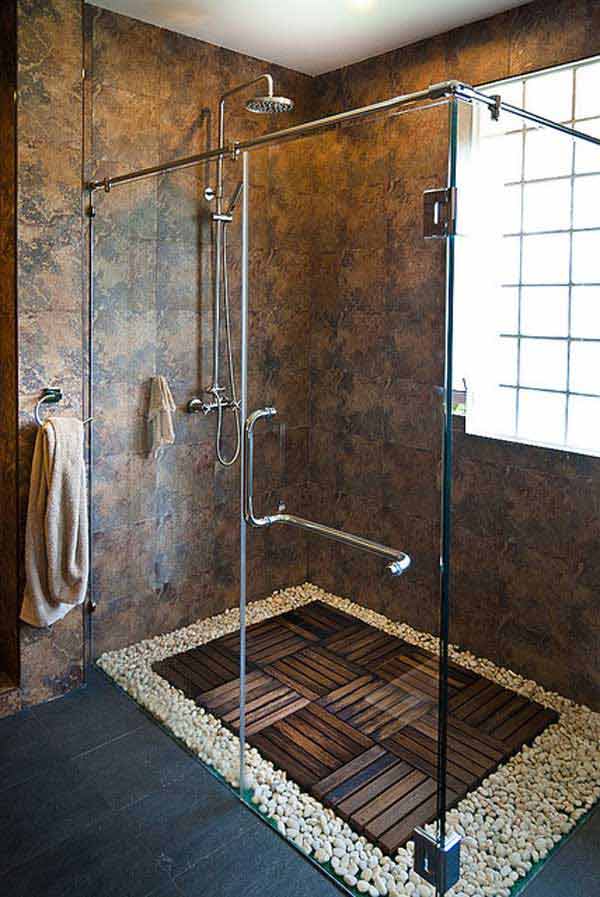Choosing the right flooring for kitchens and bathrooms requires balancing durability, water resistance, and aesthetics. These high-traffic areas demand materials that withstand spills, humidity, and frequent cleaning. Porcelain and ceramic tiles top the list for their impervious surfaces and endless design options, from wood-look planks to geometric patterns. Luxury vinyl plank (LVP) offers waterproof capabilities with comfortable underfoot feel, ideal for homes needing warmer surfaces. Natural stone like slate or marble brings elegance but requires sealing to prevent stains. Regardless of material, prioritize slip-resistant finishes, especially for households with children or elderly members. Proper installation with moisture barriers prevents water damage to subfloors.
Tile remains the gold standard for wet areas due to its unbeatable water resistance. Large-format tiles minimize grout lines where moisture can penetrate, while textured surfaces improve traction. Mosaic tiles create stunning accents in shower floors or kitchen backsplashes. For unified spaces, many homeowners continue the same flooring from kitchen to adjacent bathrooms. Heated floor systems add comfort under tile while helping dry spills faster. Porcelain tiles now convincingly mimic natural materials like wood and concrete at lower maintenance. Darker grout colors hide stains in busy kitchens, while epoxy grout provides superior moisture resistance. Always ensure proper slope and drainage in bathroom installations to prevent pooling water.
Vinyl flooring has evolved into a premium option for kitchens and baths. Waterproof WPC (wood plastic composite) and SPC (stone plastic composite) cores resist warping from moisture exposure. The latest luxury vinyl products feature realistic embossing that replicates wood grain and stone textures. Sheet vinyl provides seamless protection with fewer seams for water to penetrate. Many vinyl floors now carry commercial-grade ratings, standing up to heavy appliances and frequent foot traffic. Easy click-lock installation makes vinyl ideal for DIY projects. Unlike tile, vinyl offers more cushioning underfoot—a benefit for those who spend hours cooking. Look for phthalate-free options and avoid cheap vinyl that may off-gas volatile organic compounds.
Natural materials bring organic beauty but need special consideration in wet areas. Engineered hardwood with aluminum oxide finishes outperforms solid wood in kitchens, though neither belongs in full bathrooms. Bamboo’s natural resistance to moisture makes it a smarter wood alternative. Cork provides cushioning and warmth while naturally resisting mold—perfect for powder rooms. Concrete floors work well in modern spaces but require waxing or sealing. For stone selections, opt for denser varieties like granite over porous travertine. Always use area rugs near sinks and stoves to protect flooring from water splashes and dropped utensils. These materials demand more maintenance than synthetic options but create unique, high-end looks when properly cared for.
Innovative hybrid flooring options combine the best features of multiple materials. Rigid core vinyl planks with attached underlayment simplify installation over uneven subfloors. New ceramic/vinyl composites offer tile’s durability with vinyl’s comfort. Some manufacturers now produce waterproof laminate suitable for kitchens (though still not recommended for full bathrooms). For eco-conscious homeowners, recycled glass tiles and reclaimed wood-look porcelain provide sustainable style. Radiant heating systems work with most floor types, adding comfort in colder climates. When selecting colors and patterns, medium tones hide dirt better than very light or dark extremes. Regardless of material choice, professional installation ensures proper waterproofing and longevity for these hardworking floors.
Bathroom Flooring Options
Home Classic Art Deco Floor Tile 41 Floor tile design, Floor design, Modern flooring
Herringbone Flooring Sandymount Dublin – Modern Form Kitchens
Efficient Small Powder Room Design Ideas – Hmdcr.com Tiny bathrooms, Small bathroom
Kitchen Backsplash: Highland Park, Whisper White, 3×6, Subway Tile White subway tile kitchen

Amazing Ideas Adding River Rocks To Your Home Design Architecture & Design

Related Posts:


:max_bytes(150000):strip_icc()/GettyImages-625163534-5c4f1804c9e77c00014afbb5.jpg)

/GettyImages-182502312-57d465ae5f9b589b0a76992f.jpg)


